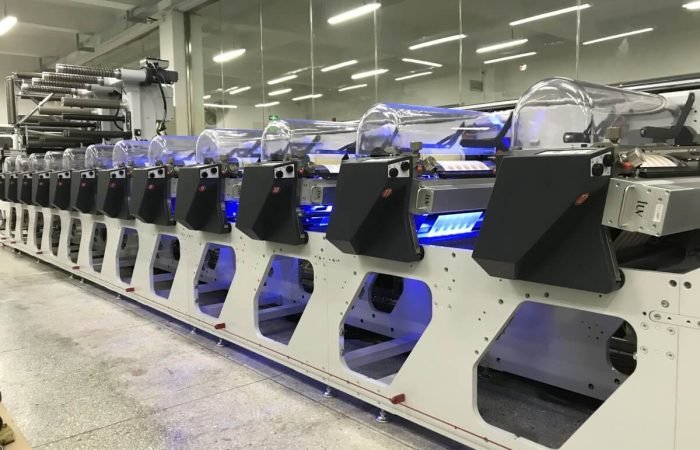The printing industry thrives on precision, speed, and adaptability. As technologies evolve, LED curing systems have emerged as game-changers for manufacturers and printers alike. Whether you’re in label printing, flexography, offset, or narrow-web applications, understanding how LED UV curing works—and choosing the right manufacturer—can redefine your workflow. Let’s break down the science, applications, and selection criteria for these systems.
Why LED UV Curing Dominates Modern Printing
Traditional mercury-arc lamps are fading into obsolescence. LED curing systems offer instant on/off functionality, reduced energy consumption, and zero ozone emissions. For industries like label printing—where thin films and heat-sensitive substrates are common—LEDs eliminate heat distortion. In flexographic printing, faster curing speeds allow high-resolution graphics without compromising production timelines.
The secret lies in UV-LED’s narrow-spectrum output. By tuning wavelengths to match photoinitiators in inks and coatings, manufacturers achieve pinpoint curing efficiency. No wasted energy. No excess heat. Just rapid polymerization that locks pigments into place.
Tailored Solutions for Every Printing Method
1. Label Printing: Precision Meets Durability
Labels demand crisp details and resistance to abrasion, moisture, and chemicals. LED curing ensures solvent-free inks cure instantly, even on polyester, polypropylene, or metallic substrates. Manufacturers like [Example Manufacturer] design systems with modular optics to handle intricate designs and variable data printing.
2. Flexography: Speed Without Compromise
Flexo printers rely on fast-drying inks for high-volume jobs. LED systems cut drying times by 50-70% compared to conventional methods. This is critical for food packaging, where low-migration inks must cure completely to meet safety standards. Look for manufacturers offering adjustable irradiance to accommodate different ink formulations.
3. Offset Printing: Bridging Tradition and Innovation
Offset printers often face challenges with coating adhesion on glossy stocks. LED-cured varnishes provide scratch-resistant finishes without yellowing over time. Hybrid systems (LED conventional) are gaining traction, allowing shops to phase in LED tech without overhauling existing workflows.
4. Narrow-Web Printing: Flexibility for Niche Markets
Narrow-web applications—think tags, tickets, or specialty packaging—require compact, energy-efficient curing units. Leading manufacturers integrate LEDs into print heads or retrofit existing presses. Bonus: LED systems eliminate the need for exhaust systems, slashing installation costs.
Key Features to Demand from Your LED Curing Manufacturer
Not all LED systems are created equal. Here’s what separates industry leaders from the pack:
- Wavelength Accuracy: Ensure the system emits at 365-395 nm for broad compatibility with UV inks.
- Cooling Efficiency: Overheating shortens LED lifespan. Look for advanced thermal management (e.g., liquid cooling).
- Modular Design: Swappable LED arrays let you adapt to new inks or substrates without buying new hardware.
- Smart Controls: IoT-enabled systems monitor energy use, output intensity, and maintenance needs in real time.
Pro tip: Ask for spectral distribution graphs. Top manufacturers test their LEDs rigorously to guarantee consistent output.
The Sustainability Edge
Printers aren’t just buying equipment—they’re investing in a brand image. LED curing slashes energy bills by up to 70% and cuts CO2 emissions. Unlike mercury lamps, LEDs contain no toxic materials, simplifying disposal. For eco-conscious clients (think organic skincare labels or recycled packaging), this is a marketing goldmine.
Future Trends: What’s Next for LED Curing?
- 3D Printing Integration: UV-LEDs are enabling faster curing of resins in additive manufacturing.
- Bio-Based Inks: Manufacturers are developing LEDs tuned to cure plant-derived photoinitiators.
- AI Optimization: Machine learning algorithms adjust curing parameters dynamically based on substrate thickness or ambient humidity.
Choosing Your Manufacturing Partner
A great LED curing system manufacturer doesn’t just sell hardware—they collaborate. Seek out providers who:
- Offer on-site testing with your specific inks and substrates.
- Provide clear ROI calculations based on your production volume.
- Have a track record in your niche (e.g., medical packaging vs. promotional labels).
Avoid vendors who push one-size-fits-all solutions. Your flexo press has different needs than a screen printing setup.
Final Word
LED UV curing isn’t a luxury—it’s the new baseline for competitive printing. By aligning with a manufacturer that understands the nuances of your craft, you’ll unlock faster turnaround, lower costs, and capabilities that dazzle even the most demanding clients. The light at the end of the tunnel? It’s probably an LED.












